Custom Shop: An Interview with Pierre Erizias
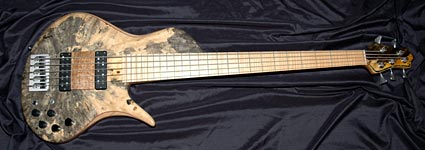
While checking out all the booths at Summer NAMM last month, we ran into custom bass builder, Pierre Erizias. Based out of Montreal, Pierre wowed us with not only his basses, but his cool story of how he got started building. We were able to catch up with him recently to dig a little deeper and find out about his business.
You mentioned you wanted a custom bass, but couldn’t afford one. What were you playing at the time, and what were you dreaming of?
I started playing bass on my 18th birthday, on a Cherry Burst Samick. I had the choice to buy a ’76 Fender Jazz or the Samick, both priced at $400. Guess who has been beating himself up since then? Samick being what it was, I played it for about 6 months day and night with the action at maybe 1” from the fingerboard. Sounded really bad and I was in pain all the time, thinking that was part of the game. That is until I got a chance to try a ’72 Jazz bass and I was floored.
I hated the look of Fenders at first but the tone and playability of that bass opened my eyes to the possibilities. In a twisted way, if I had had a great bass to start with, I would have never fiddled around and tried to adjust it. I guess that is how I got my start at “lutherie”. Playing around with the Samick until it felt and sounded good was the first step on my quest to my sound.
Maybe eight months after I started playing bass and messing with adjustments, I got to buy a ’75 Jazzbass (which I still own and judge all my basses against!) That bass is actually the bass that precedes Marcus Miller’s on the factory chain. I still believe that if you’ve never played a vintage bass, you can’t really know what tone is fully about.
My dear friend Michel Laplante – who is a crazy bass player – bought one of the early Tobias 5 strings basses straight form Michael. When I saw, played and analyzed that bass, I had to have one! He told me the price… well you get the picture. If you want to be a pro, you’ve got to get pro gear. I just was way too poor to buy a Tobias bass at $3200 US. The Canadian dollar being what it was back then that meant about $4800 CAN.
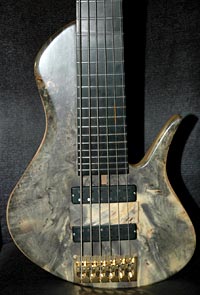 Most people would just keep on going with what they have, but you decided to build a custom bass yourself. What sort of experience did you have that helped you with the first bass?
Most people would just keep on going with what they have, but you decided to build a custom bass yourself. What sort of experience did you have that helped you with the first bass?
I had never carved wood in my life, but I told myself that I could not mess it up too much. I sold my Samick for $150 and the original case of my Fender for $300!! (Yes beating myself up about that one too). With the money, I bought wood at a local exotic wood store. I found it by complete luck. They had Purpleheart, which I needed for the neck, hard rock maple and flamed maple for the body wings. I grabbed what I thought was rosewood for the fingerboard (I still don’t know what it is to this day). Anyway, my first bass was a Tobias meets F Bass shape and all that to get a Gary Willis tone.
Multiple cuts and gashes later, I still had all my fingers and a brand new, not-so-high-end 5 string fretless bass. I learned so much building that bass, but almost as much getting it played by other guys and by receiving opinions from bassists, sound men and luthiers. You’ve got to be able to take criticism – both good and bad – or you won’t go far. That basically forced me to make another that was better, a guy liked it, asked me for one and you get the picture! I am fortunate that luthiers in Montreal are a great bunch. You can ask any question and they will help you if you are serious enough. That is what kept me going… I don’t think I’ll ever be satisfied so I must continue to try.
I love what Michael Tobias said once, “you learn a bunch of stuff during your life, experiment with it, apply it, think it’s the next best thing since sliced bread, and then you realize that you still have to learn more because, well face it, all that stuff might just be crap after all. And you start over!” (Something along those lines). I love that. That is wisdom.
How many basses did you build before you found you had the bass you wanted?
Hmmm… I still haven’t built the bass that I want for the simple reason that I think it’s impossible to reunite that in just one bass. I love them all! If I was a millionaire, I’d still build basses but I would buy a whole bunch too. I’m not looking for one ultimate bass
You mentioned that you only wanted to build a bass for yourself, but it turned into a business. What happened?
Well, I’m also a somewhat professional bass player (way more a couple years ago). I was always on tour, recording here and there so my basses got a lot of exposure at festivals, TV shows and studios. My favorite compliment comes from sound engineers both live and in studio. If they like it – and they let me know without me asking – then I know I’m on the right path. The instruments I make are never really the same. I approximate some of the details like neck shape or belly relief cut or the front bevel. If players love it, great! If they don’t, well I can always modify it to their liking. I mean we all have different tastes and I love that. That is how it all started. Guys seem to like them, ask me for one with their own specs and a couple basses later, I’m in business. Offer plus demand I guess. Wasn’t really my goal to build to order but hey, I love doing it.
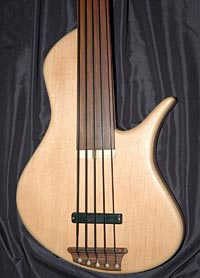 How many basses have you built to date?
How many basses have you built to date?
I think I have built about 35 of my own basses (the first couple of years are a bit fuzzy. Lots of modifications, etc.). I forgot to mention that after building my first bass, I worked for a luthier in Montreal for about one year. I built quite a few there. I am working on a batch of about nine basses at the moment… really small production as you can see.
How do the more recent ones compare with the first?
The first bass had a really odd shape that didn’t fit in a regular gig bag or case, so it was hard to tour with. I modified the shape a lot by emulating Tobias. While designing what now is my Singlecut, I got an old copy of Guitar Player with a picture of a Singlecut Imperial bass by Fodera. I kinda mixed the two shapes, couple of trial and error and voilà. I still don’t have a double cutaway shape that I like. I’m a graphic designer so I tend to be picky on my bass designs.
My first bass had a neck thru design, it made me understand quite a bit about neck design. I now focus on bolt-on and set neck because they give me what I am looking for without having to tweak it electronically. I also make my new basses way lighter than before. The first bass I made was about 13 pounds compared to 9 pounds max for the new ones. I destroyed my shoulders playing and carrying heavy basses.
I have way better tools now so I can produce a high end product. I built most of my first basses with a dull chisel, a rust rasp, crappy sand paper and my neighbor’s ancient jigsaw and router. (He was the best!!) Great tools do make a huge difference in quality and safety.
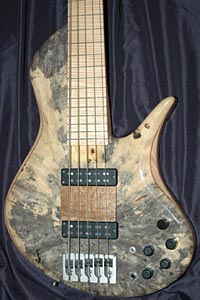 Tell us about your process in creating a bass for someone.
Tell us about your process in creating a bass for someone.
I like to pick my clients’ brains a bit before building a bass for them. I try to keep up to date with the latest bass trends, like hot new bassists or gear. That helps narrow down what most clients are looking for. I take traditional construction (vintage Fender), mix a bit of new world magic (Fodera, MTD, Smith) and make it my own and all that hoping that I understood what the client wanted. I also try to steer them away from stuff I think don’t works, like a Wenge body with 1/2” ebony top and Balsa neck on a 7 string bass… to play in a blues band! (Happens more than you can imagine).
I always focus on the neck construction because I believe it is the tuning fork on the instrument. From there, I kinda “EQ” the body woods by selecting species to the best of my knowledge and combine them to create the tone wanted.
What would you want to tell someone thinking of building his or her own bass?
I always encourage people to try building their own if they are serious. It is a great feeling to create music on pieces of wood you have selected, carved and shaped to your liking. I also tell them that once bitten, you can’t go back! It’s hard to make just one in my book.
When I built my first bass, there was hardly any information available in Montreal so I just observed and analyzed the bass I wanted to “copy” without knowing anything about wood, wood grain orientation, moisture content, critical glue joints etc. Nowadays, there is no reason to build a crappy first instruments with all the knowledge available online. A lot of it is not that great but if you go at it knowing that there is more than one way to make a great first instrument. I’m currently helping three guys, including a high school kid, build their first guitars and it’s a really nice feeling. Lots of work ahead.
Oh, I would say to seek the advice of either a local luthier or great cabinet maker for wood working tips.

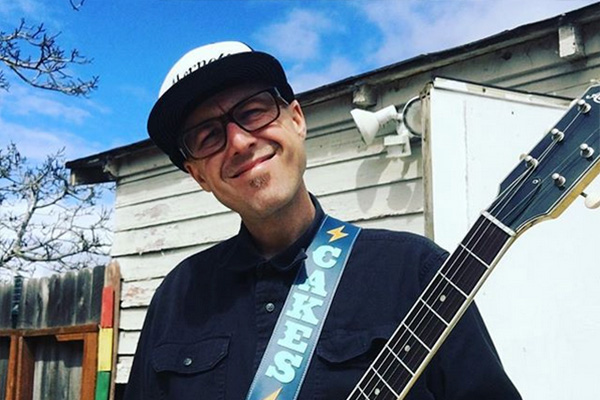
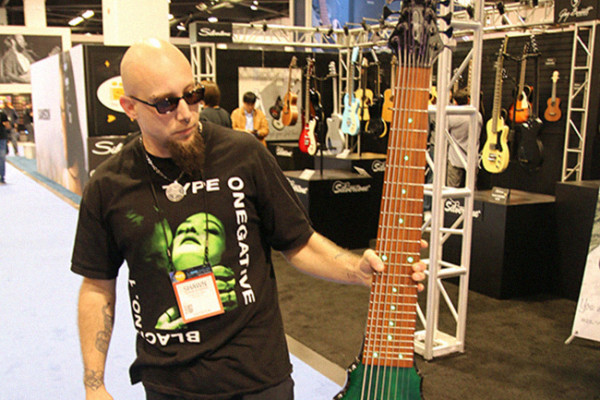
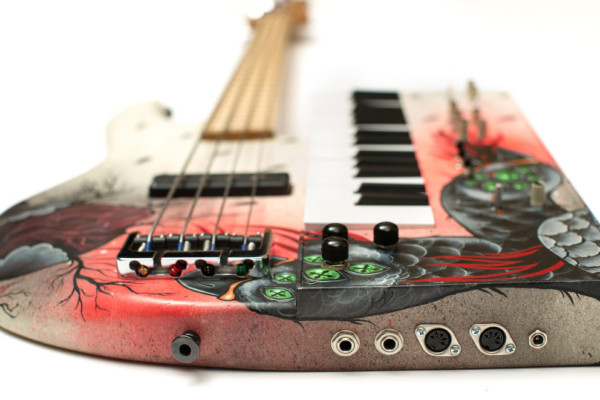
Custom Shop: An Interview with Pierre Erizias: While checking out all the booths at Summer NAMM last month, we ran… http://bit.ly/avkqiv
This comment was originally posted on Twitter
great interview guys!
i get to know my friend Pierre a little more
his way of thinking and doing stuff
he is a smart cat, watch out for him in the future!!! i’m proud of what this guy have already accomplish A+
Thanks Michel! It’s all because of your Tobias dude…and your playing of course!
Thanks for sharing your insights and experience.Admittedly I have thought about a bass body made out of wenge. I know that would be heavy…but what about that good growl? Isn’t it practical?
Hey Jon. Thanks for asking. I can’t pretend to know everything when it comes to obtaining great growl but one thing I know for sure is that you have to think about health and comfort first. What I mean by that is that playing music should not be torture. A Wenge body would not give you more growl. I really consider the neck to be the epicenter of tone. If you start with a great neck mixed in with the appropriate body, you will get what you are looking for.
Don’t forget that “growl” as we know it comes from vintage instruments like Fender and Musicman…which vary in weight quite a bit.
Electronics do play a part in that recipe as well.
I always advise bassists to try a huge variety of instruments just to be able to forge a better idea of what they want in the end from a “musical tool”.
To me, comfort, weight, tone and solidity are all factors that I look for in a bass. I also like a great looking design…but that is the least of the above factors.
Now with all that said, remember it is my own opinion which is constantly being shaped as I go along this path to making the greatest bass I can.
Hope that helped a bit!
Pierre Erizias
[…] http://www.notreble.com/buzz/2010/07/27/custom-shop-an-interview-with-pierre-erizias/ […]